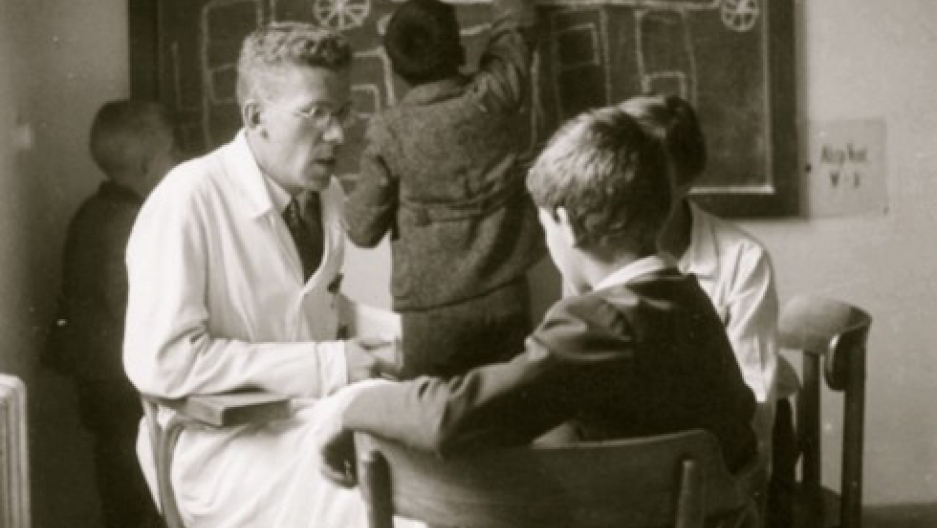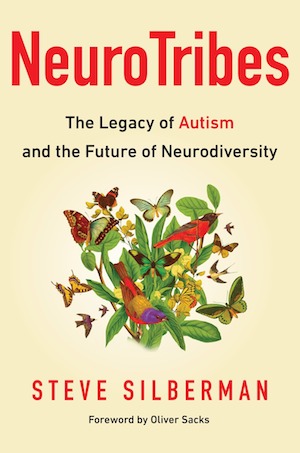A new book recounts the forgotten history of autism
By Adam Wernick, Christopher Intagliata

A new book recounts the forgotten history of autism
By Adam Wernick, Christopher IntagliataIn NeuroTribes: The Legacy of Autism and the Future of Neurodiversity, Silberman takes us back to Vienna before World War II, where he introduces us to a young doctor named Hans Asperger.
In the 1930s, Asperger was already studying what he believed to be a widespread condition among the children of his day — a mostly heritable condition composed of a whole spectrum of symptoms.
“Asperger was an extremely visionary and humane clinician,” Silberman says. “His clinic was not just the sort of place where parents would bring their children for evaluation and a diagnosis, but it was also like a residential school.”

Asperger and his colleagues lived with the children they treated. They held classes each day, like geometry or history. They had PE classes with music in the mornings. They designed an environment, Silberman says, that would “both allow the clinicians to observe the children very closely, but also allow the children to become more comfortable with themselves and with each other. … It was a very, very humane environment and way ahead of its time in that way.”
More importantly, Asperger’s ideas about autism were decades ahead of their time, Silberman says. Asperger and his colleagues conceived of autism as a lifelong condition, lasting from birth to death, requiring special forms of support from family, teachers and the community.
What Asperger described “was mapped pretty closely to what we now call the ‘autism spectrum,’” Silberman says. Some children, he observed, were unable to speak and might require individual support for the rest of their lives, while others would thrive in advanced classes in math and science.
The rise of Nazi Germany disrupted Asperger’s work and changed the course of autism diagnosis and treatment for much of the rest of the 20th century.
By the late 1930s, when the Nazis annexed Austria to Germany, they had also started passing eugenic laws, which compelled doctors, nurses and clinicians to report disabled children to Berlin.
“In fact, the Nazis eventually undertook a secret extermination program of disabled children and adults as part of their effort to purge the gene pool of hereditary forms of illness,” Silberman explains. “This program became the dry run for the Holocaust. [It] was where the Nazis developed methods of mass murder that they would eventually use on the Jews.”
In addition, Jewish clinicians were forced to flee the country. One of them was George Frankl, Asperger’s chief diagnostician. Frankl was rescued from the Holocaust by an American child psychiatrist named Leo Kanner. Frankl started working for Kanner in 1938.
Donald Triplett also arrived in Leo Kanner’s world in 1938. Triplett is considered Leo Kanner’s first autistic patient. But initially, Kanner didn’t know what to do with him. “He had seen some of these symptoms before in children — that he called pre-psychotic — but he basically wasn’t able to make a diagnosis. So, he sent Donald Triplett to George Frankl for evaluation,” Silberman says.
Having just spent 11 years working in Asperger’s clinic, seeing scores of autistic children at all levels of ability, Frankl understood Triplett. In fact, Frankl evaluated Kanner’s first three autistic patients.
Then, in 1943, a year before Asperger published the results of his own work, Kanner wrote the paper that made him the world’s leading authority on autism.
“The problem for autistic people and their families was that Kanner defined autism much more narrowly than Asperger had done,” Silberman explains. “For one thing, he called it ‘early infantile autism,’ so it was definitely a condition of early infancy, not a lifelong condition.”
What’s more, Kanner eventually blamed parents for triggering autism in their children. “The image of the ‘refrigerator mother’ came from Kanner’s work,” Silberman says. “Bruno Bettelheim sort of made a career out of it later, but it was really Kanner who thought up that horrible idea.” ‘Refrigerator mother’ refers to the mothering of autistic children by cold, emotionally distant mothers, resulting in a dysfunctional mother-child relationship.
Because Kanner and his colleagues viewed the disorder largely in emotional and psychological terms, the recommended course of treatment for autism became institutionalization. By contrast, Asperger believed the disorder was genetic and therefore had to be adapted to, not cured.

In addition, Asperger understood ‘autistic intelligence,’ Silberman says — that is, the “bold suggestion that autistic people have played an unappreciated role in the evolution of culture.”
“Asperger always appreciated that autism was a condition that conveyed both profound disabilities and very special gifts,” Silberman says. “Kanner, on the other hand, interpreted even the gifts of his patients through the lens of psychopathology. He thought, for instance, that one of the kids in his clinic who could instantly identify 18 symphonies before he turned two, was just trying to impress his parents in a kind of desperate plea for their affection.”
Silberman believes the world can and should adapt to meet the needs of autistic people, in the way we have done for people with physical disabilities.
“We can make a cognitively accessible world by, say, presenting lessons and curricula in different formats for visual or audio learners,” he says. “We can provide quiet spaces in schools so that kids who are facing a meltdown from sensory overloaded can go chill out. We can do autism-friendly performances on Broadway, which have already been a fantastic success — with less pyrotechnics and social stories beforehand so the kids don’t get surprised.”
“We know how to deal with disability,” he says. “We just have to rise to the challenge, instead of thinking that we can make autism go away if we throw enough money at it.”
This article is based on an interview that aired on PRI’s Science Friday with Ira Flatow.
